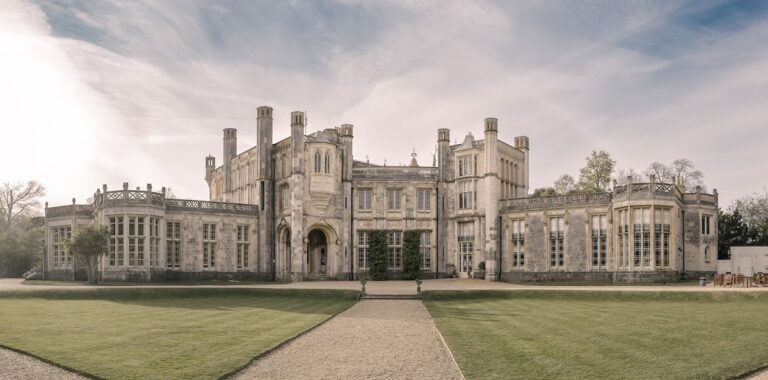Old Sarum: An Ancient Settlement and Historic Site in England
Visitor Information
Google Rating: 4.5
Popularity: Medium
Google Maps: View on Google Maps
Official Website: www.english-heritage.org.uk
Country: United Kingdom
Civilization: Unclassified
Remains: Military
History
Old Sarum is located just north of the city of Salisbury in England and represents one of the earliest known settlement sites in the area. Its earliest known occupation dates back to around 3000 BC, placing it among the prehistoric habitation sites near the famous monuments of Stonehenge and Avebury.
Around 400 BC, the site gained new importance when an Iron Age hillfort, known from historical records as Sorviodunum, was built. This enclosure, strategically positioned on a hill, was designed to protect and control nearby trade routes and the Hampshire Avon river. The fort’s importance continued through the Roman era, as it remained occupied and was part of the territory governed by the Atrebates tribe. In 552 AD, the Saxons seized the hill, converting it into a defensive stronghold to guard against Viking raids. It was used as a royal residence by notable rulers such as King Egbert of Wessex and served as a meeting place for councils, including a recorded gathering in 960 AD aimed at organizing defenses against Danish invaders.
Following the Norman Conquest in 1066, the site underwent significant transformation with the construction of a motte-and-bailey castle completed by 1069. This castle came under the direct control of the Norman kings, indicating its strategic and political significance. Between 1075 and 1092, the first cathedral at Salisbury was built on the site under the leadership of Bishops Herman and Osmund. It is believed that the Domesday Book, the great survey of England commissioned by William the Conqueror, was likely compiled at Old Sarum in 1086. Early in the 12th century, Bishop Roger expanded this cathedral and initiated the building of a royal palace measuring approximately 170 meters by 65 meters, featuring massive walls and grand internal spaces such as a great hall and a large tower.
Old Sarum served as a fortified center combining royal power and religious authority for about three centuries. However, during the early 1200s, conflicts between the local sheriff and bishop, along with practical difficulties such as limited water supply and spatial constraints on the hilltop, prompted the decision to relocate the cathedral. This move led to the foundation of New Salisbury on the nearby plains, with many stones from the old site reused in the construction of the new city. By 1322, King Edward II abandoned the castle, and in 1514 Henry VIII sold off the property. Although the site was no longer inhabited, Old Sarum continued to hold parliamentary representation until the Reform Act of 1832, earning a notorious reputation as a “rotten borough” due to its lack of residents but retained political influence.
In the 20th century, archaeological interest revived, leading to excavations conducted between 1909 and 1915 and again in the 1950s. A geophysical survey in 2014 further revealed details of the medieval street layout and the remains of the royal palace. Today, the site is protected and managed for historical preservation.
Remains
The remains of Old Sarum present a complex layout that reflects its evolution across several historical periods. The original Iron Age hillfort is oval in shape, measuring approximately 400 meters in length and 360 meters wide. It was fortified with a double set of earth banks and ditches, notable for their size and for protecting the eastern entrance, which was the main point of access. These fortifications are well-defined in the landscape, marking the core of the ancient settlement’s defensive strategy.
The Norman castle built after the conquest features a prominent central motte, or raised earth mound, surrounded by a bailey—a fortified courtyard—enclosed by a stone curtain wall. Within the southeast section of this outer bailey lies the remains of the royal palace, recently uncovered through archaeological work. The palace’s walls were up to three meters thick, enclosing an area roughly 170 meters by 65 meters. It housed a very large great hall some 60 meters long and included a substantial tower, all indicative of its importance as a royal residence and administrative center.
At the western end of the site lie the foundations of the cathedral consecrated in 1092. Initially modest in scale, this religious building was doubled in length during expansions in the 1110s, occupying much of the northwest quarter of Old Sarum. Despite its strong construction, historical reports note storm damage soon after the completion of these works. Today, the cathedral’s foundations remain exposed and visible, offering a clear impression of its size and layout.
Archaeological excavations have also identified areas of industrial activity within the medieval settlement, including kilns and furnaces where pottery and metalwork were produced. Residential buildings tended to cluster in the southern parts of the site, close to the defensive ditch that protected the inner bailey and castle complex. Numerous wells have been discovered, including one located inside the Norman keep. These wells, while vital for water supply, were deep and difficult to access, which contributed to the decision to move the main settlement and cathedral to the plain below.
Present-day remains include the visible earthworks of the Iron Age hillfort and the Norman motte, along with the stone foundations of major buildings. As a scheduled ancient monument and Grade I listed site, Old Sarum is carefully preserved. Modern interventions on the site—such as paved and grass parking spaces—are limited to areas within the outer bailey, leaving the central archaeological features undisturbed.










